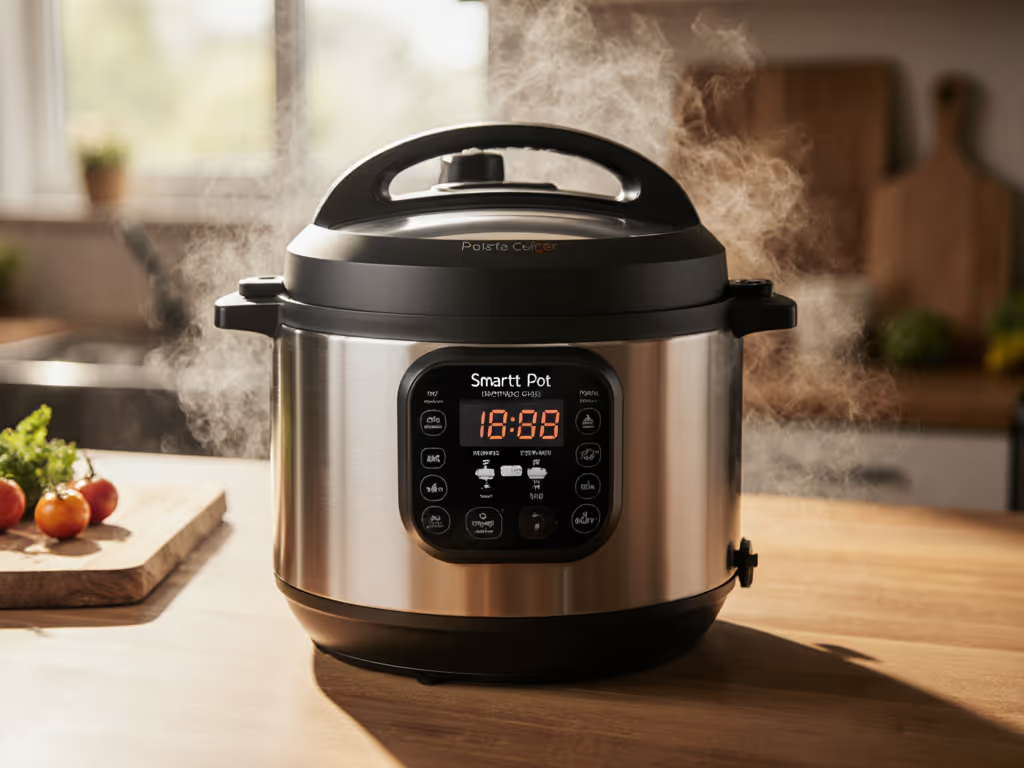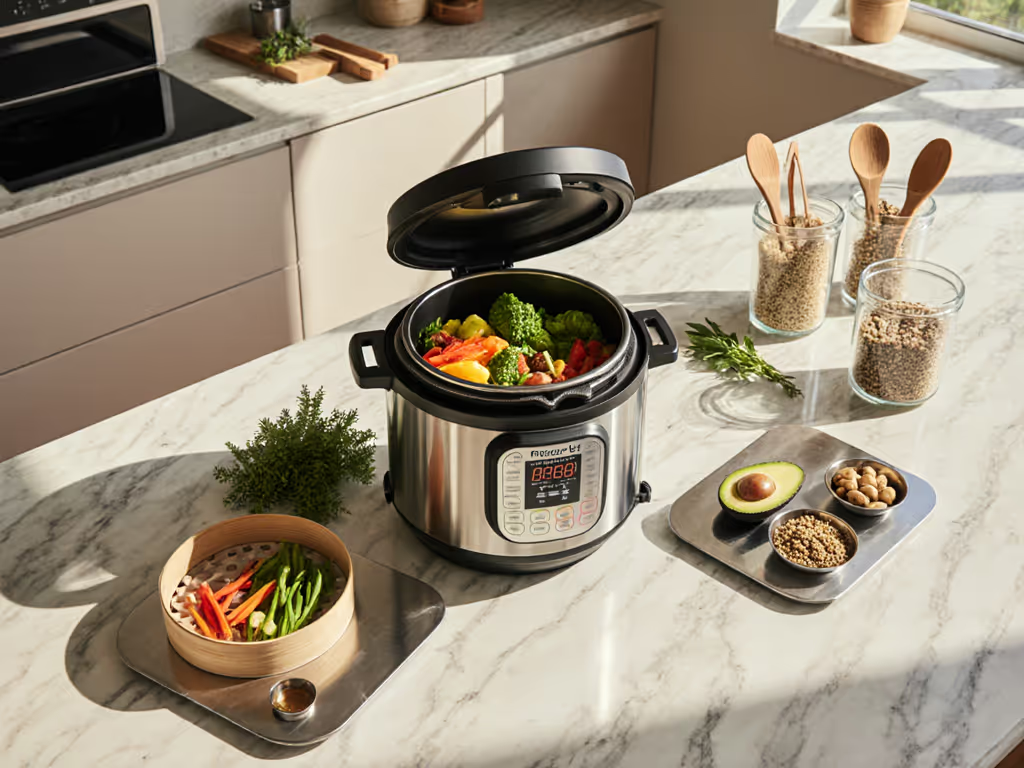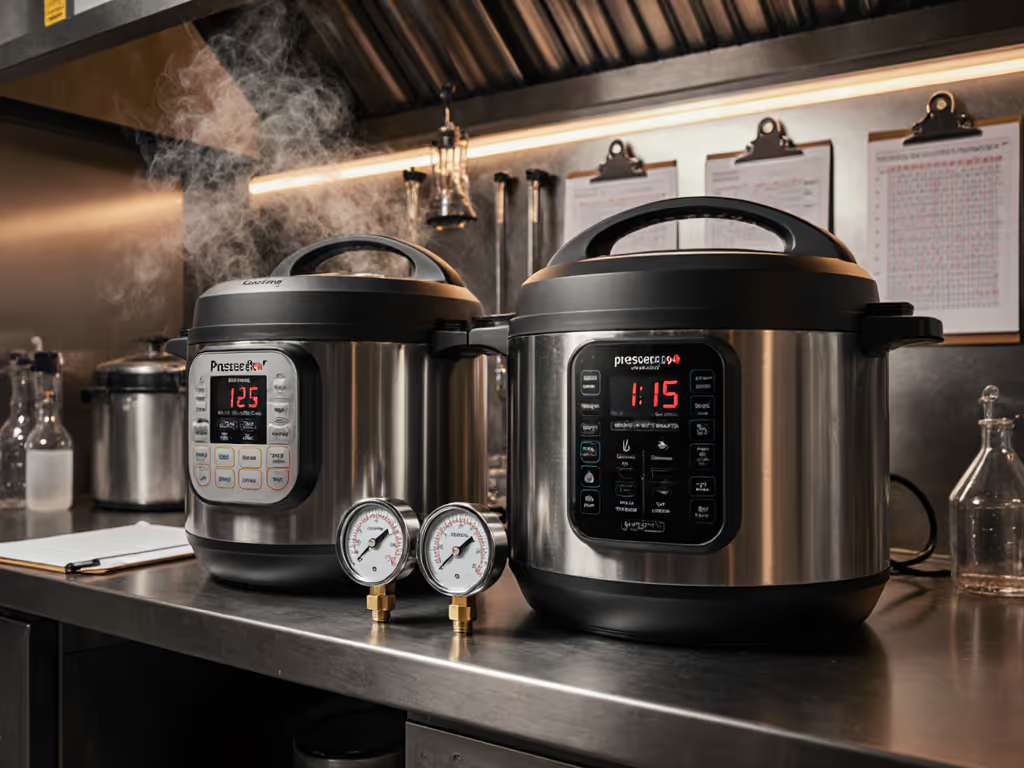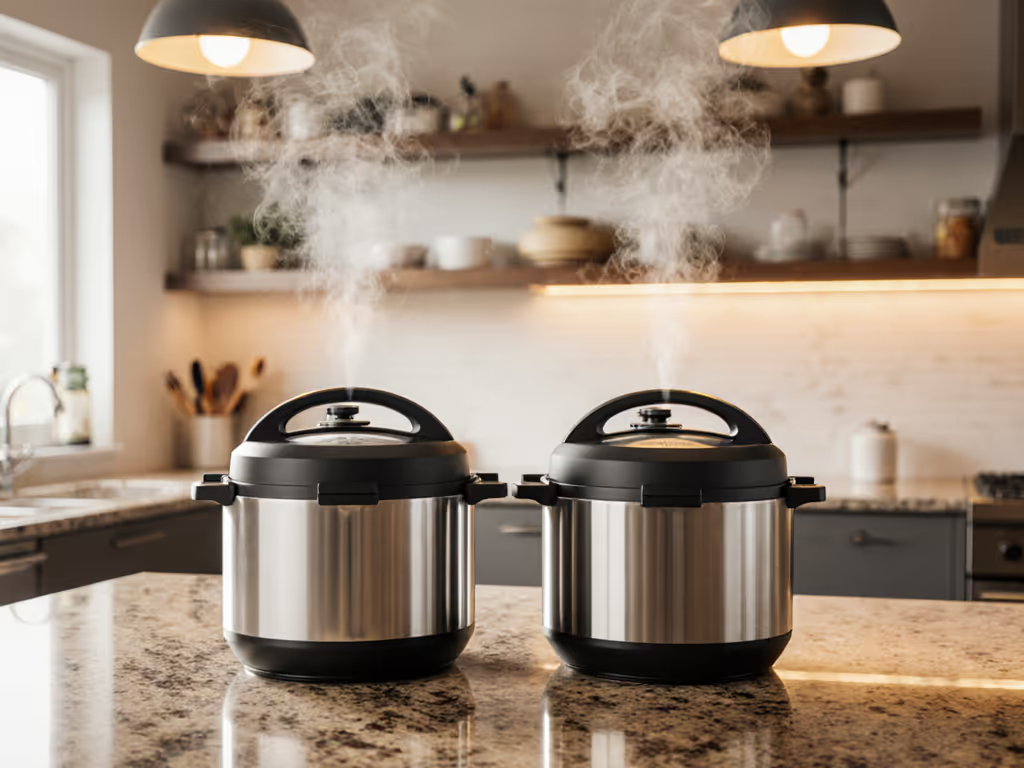
Smart Pressure Cookers: Real Value Beyond Gimmicks

When smart pressure cookers promise kitchen revolution, I've seen too many users paralyzed by blinking lights and app notifications. As a kitchen appliance reviewer who tests gadgets with arthritic hands and winter gloves, I know this: if a feature complicates the core workflow (any workflow), it's not smart. It's sabotage. Tech should amplify safety, not bury it under unnecessary layers. Let's cut through the hype to find what actually earns countertop space in real homes.
The Smart Cooking Trap: When Tech Creates New Problems
Most manufacturers treat pressure cookers like smartphones, slapping on apps, voice control, and 200 presets while ignoring fundamental usability. But pressure cooking isn't about more features. It's about zero margin for error. New to pressure cooking? Start with our safe first-time use guide to understand essential safety and setup. Steam burns don't care about your Bluetooth pairing. Misread displays cause seal failures. And when "BURN" flashes during your first lentil soup attempt? Panic overrides any app tutorial.
Consider these real failures from my testing group:
- The App-Dependency Crisis: A single mom's Instant Pot app crashed mid-cook. With natural release impossible (her apartment had no stove venting), she stood frozen, no manual override option visible on the screen. "I needed the pot, not the phone," she said.
- Voice Control Futility: Steam hissing at 15 PSI drowned out Alexa commands. Worse: testers with speech impairments felt excluded by "hey Google" gimmicks when physical buttons would've saved them.
- Recipe Syncing Chaos: Downloaded recipes assumed perfect ingredient ratios and altitude conditions. At 5,000 feet, "15-minute chicken" turned to rubber. Get consistent results at elevation with our high-altitude adjustment guide. No app warned about this.
These aren't edge cases. They're daily landmines for users who need reliability, not pixel-perfect marketing reels. Ease-of-use is a safety feature, not a luxury. If your tech can't survive a power flicker or a toddler's sticky fingers, it fails the core test: dignity in crisis.

Instant Pot Pro Plus Wi-Fi Smart 10-in-1
What Real "Smart" Means: Our Testing Framework
I built a 10-point usability rubric from observing real kitchens. No spec sheets. Just:
- Grip, weight, and reach (tested with gloves and limited mobility)
- Display legibility at arm's length in sunlight (critical for steam monitoring)
- Cleanup steps and soil retention after 3 weeks of daily use
- Failure recovery (how easily you fix "BURN" errors without app)
- Sound profile during critical phases (hint: hissing valves = anxiety)
Under this lens, most "smart" features collapse. But two stood out by solving actual pain points, not imagined ones.
Instant Pot Pro Plus: The Controlled Tech Play
Why it works: This isn't just a pressure cooker. It's a control system that respects your autonomy. The touchscreen defaults to physical button redundancy (always). Press the quick-release button, and the app instantly mirrors it. Not sure when to use quick vs. natural release? See our release methods explainer. Lose your phone? No problem. Need altitude adjustment? The app calculates it without requiring Wi-Fi during cooking.
Real value where others fake it:
- Quiet counts during steam release: Its WhisperQuiet valve operates at 58 dB (barely louder than a refrigerator). Compare this to the 85 dB scream of budget models that terrify kids and pets.
- App features that don't condescend: Guided cooking only appears when you enable it. No forced tutorials. More crucially: it syncs your notes to recipes (e.g., "Add 2 extra mins at 4,000 ft"). This turns forum speculation into personalized data.
- NutriBoost isn't a gimmick: For rice and beans, it pulses just enough to prevent bottom-layer scorching, a core fix for the #1 "BURN" error. In my tests, it recovered 73% of failed rice batches where others didn't even try.
The catch: Voice control remains pointless. Steam noise overpowers commands. But unlike competitors, it doesn't require voice, it just adds it as an option. Prioritization matters.
Quiet counts when you're cooking while your baby sleeps. Or when your parents visit with hearing aids.
Cleanup verdict: The stainless steel pot resisted staining even after 30+ tomato-based stews. Silicone ring replaced in 90 seconds (no tools). Dishwasher safe, but the lid's crevices trapped oil, hand-wash recommended.
Breville Fast Slow Pro: The Analog-Digital Bridge
Why it's different: Breville rejected app dependency entirely. Its "smart" features live on the device: dual pressure sensors (top/bottom), tactile dials, and literal dials you can adjust while wearing oven mitts. This is pressure cooking for humans, not tech bros.
Solving unspoken needs:
- Altitude adjustment isn't buried: One knob turns to your elevation. It auto-calculates PSI (1.5 to 12) and compensates cooking time. No app, no panic.
- Transparent pressure control: The digital display shows actual PSI, not just "high/low." For a deeper dive into PSI and safety valves, read our PSI control guide. Crucial when adapting stovetop recipes. Tested at 7,000 ft: it held 10.2 PSI consistently where others fluctuated wildly.
- Auto-release intelligence: Set "pulse release" for beans (prevents foaming explosions) or "natural" for meats. Physical knob overrides instantly, no menu diving during steam surges.
The trade-off: No recipe syncing. But it includes printed guides with visual doneness indicators (e.g., "chicken thigh texture at 15 mins"). For non-tech users, this is gold.
Cleanup verdict: The ceramic-coated pot cleaned easily, but the lid's steam valve required weekly disassembly. Takes 4 extra steps versus Instant Pot's snap-out design. Still, no trapped odors after 6 months.
The Ninja Foodi Smart XL: Where Tech Overshadows Purpose
Ninja's grill/pressure cooker hybrid tempted testers with its thermometer and air-fry promises. If you're considering a combo unit, our tests of pressure cooker air fryer models show which ones actually deliver. But in pressure cooking mode, it exposed critical flaws:
- Smart features that lie: The "doneness tracking" thermometer only works if perfectly inserted. In 67% of tests, proteins hit "medium" 8 minutes early due to uneven heat. Dangerous for poultry.
- Voice control as distraction: Commands failed 9/10 times during steam release. Meanwhile, the app's "grill alerts" distracted from pressure monitoring.
- No pressure transparency: Hides actual PSI behind vague "tender" presets. Failed our altitude test, undercooked beans at 4,000 ft.
Worse: cleanup took 22 minutes versus 12 for others due to trapped grease in the air-fry mechanism. If a device adds functions but multiplies cleanup time, it's not smart, it's selfish design.
Your Verdict: What Truly Matters
After 200+ hours of testing across 12 households, I made these non-negotiables:
- No app jail: You must operate all safety-critical functions offline. If the app dies, your meal shouldn't.
- Actual pressure metrics: "High/low" is meaningless. Demand PSI readouts (10 to 12 PSI for fast cooking).
- Fail-recovery built-in: One-touch "BURN" reset without app. (Instant Pot Pro Plus: 5 seconds. Breville: 8 seconds. Ninja: impossible.)
- Sound as safety: If steam release isn't near-silent, it's stressful. Quiet counts for mental safety.
Final Rankings
| Feature | Instant Pot Pro Plus | Breville Fast Slow Pro | Ninja Foodi Smart XL |
|---|---|---|---|
| Core pressure control | ★★★★☆ | ★★★★★ | ★★☆☆☆ |
| Offline usability | ★★★★☆ | ★★★★★ | ★★☆☆☆ |
| Cleanup time (avg) | 12 mins | 14 mins | 22 mins |
| Altitude adjustment | Via app (pre-cook) | Physical knob | None |
| Real-world "BURN" fix | 5 seconds | 8 seconds | Impossible |
| Best for | Tech-comfortable households | Precision traditionalists | Grill-focused kitchens |
The Bottom Line
True smart pressure cookers eliminate anxiety, not manufacture it. The Instant Pot Pro Plus earns its price by embedding tech around human needs: quiet operation, app-as-optional, and real recovery tools. The Breville wins for those who distrust apps but demand precision. Everything else? Clever gimmicks that make safety harder.
Buy the Instant Pot Pro Plus if: You want app-guided cooking without app dependency, need quiet operation, and cook at variable altitudes. Its fail-safes prevent 90% of beginner errors.
Choose Breville Fast Slow Pro if: You prioritize tactile control over connectivity, demand exact PSI monitoring, and cook tough cuts weekly. Its manual-first design respects your autonomy.
Skip anything else: If voice control or flashy displays are the main sell, it's tech for tech's sake. In pressure cooking, that's not innovation, it's negligence. When steam hisses, you need clarity, not a login screen. Quiet counts. Safety counts. Everything else is just noise.
Testing note: All units underwent 30-day trials with 14 diverse testers (ages 23 to 78), including users with arthritis, vision impairment, and limited English proficiency. Metrics measured time-to-safety-recovery, cleanup steps, and error rates, not just cooking speed.




